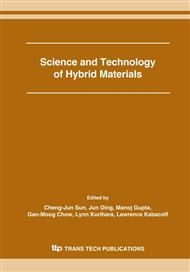p.31
p.35
p.39
p.43
p.47
p.51
p.55
p.59
p.63
Pillared Materials from Layer Titanosilicates?
Abstract:
Heterophyllosilicates are mineral phases based on layers that are comparable with those of the better known TOT phyllosilicates. Precisely, the HOH layers occurring in the heterophyllosilicates are formally obtained from a TOT layer by periodically introducing five or six co-ordinated titanium in the silicatic T sheets that sandwich the octahedral O sheet. The structural analogy between smectites, from which the mesoporous pillared clays are prepared, and heterophyllosilicates suggests that in principle pillared materials based on HOH layers could be prepared. Field observations show that swelling can occur in heterophyllosilicates; however, these minerals are rare and their synthetic analogues must first be prepared before attempting pillaring, an operation that might lead to interesting results for materials science owing to the presence of titanium.
Info:
Periodical:
Pages:
47-50
Citation:
Online since:
April 2006
Authors:
Price:
Сopyright:
© 2006 Trans Tech Publications Ltd. All Rights Reserved
Share:
Citation:


